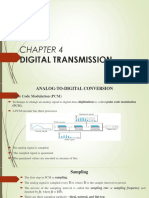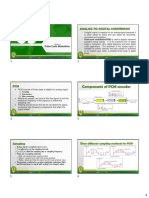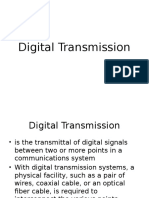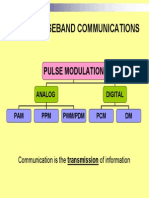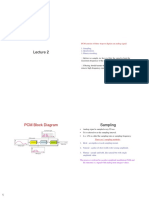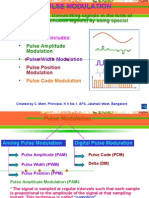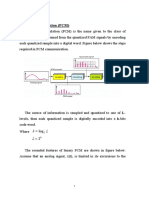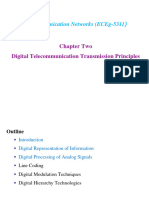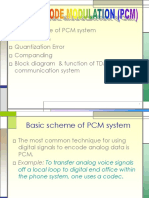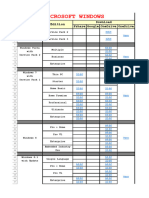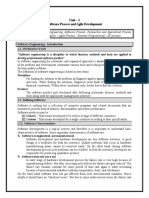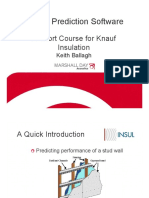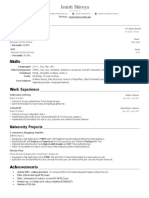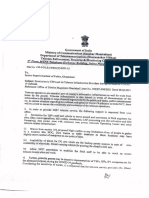0% found this document useful (0 votes)
5 views21 pagesData Communication Lecture 6
The document covers the concepts of Analog to Digital Conversion and Pulse Code Modulation (PCM) in data communication. It explains the advantages of digital signals over analog, the PCM process including sampling, quantization, and encoding, as well as the importance of bandwidth and bottlenecks in network communication. Additionally, it provides mathematical examples related to quantization and throughput calculations.
Uploaded by
sadmanshahriar4312Copyright
© © All Rights Reserved
We take content rights seriously. If you suspect this is your content, claim it here.
Available Formats
Download as PPTX, PDF, TXT or read online on Scribd
0% found this document useful (0 votes)
5 views21 pagesData Communication Lecture 6
The document covers the concepts of Analog to Digital Conversion and Pulse Code Modulation (PCM) in data communication. It explains the advantages of digital signals over analog, the PCM process including sampling, quantization, and encoding, as well as the importance of bandwidth and bottlenecks in network communication. Additionally, it provides mathematical examples related to quantization and throughput calculations.
Uploaded by
sadmanshahriar4312Copyright
© © All Rights Reserved
We take content rights seriously. If you suspect this is your content, claim it here.
Available Formats
Download as PPTX, PDF, TXT or read online on Scribd
/ 21

